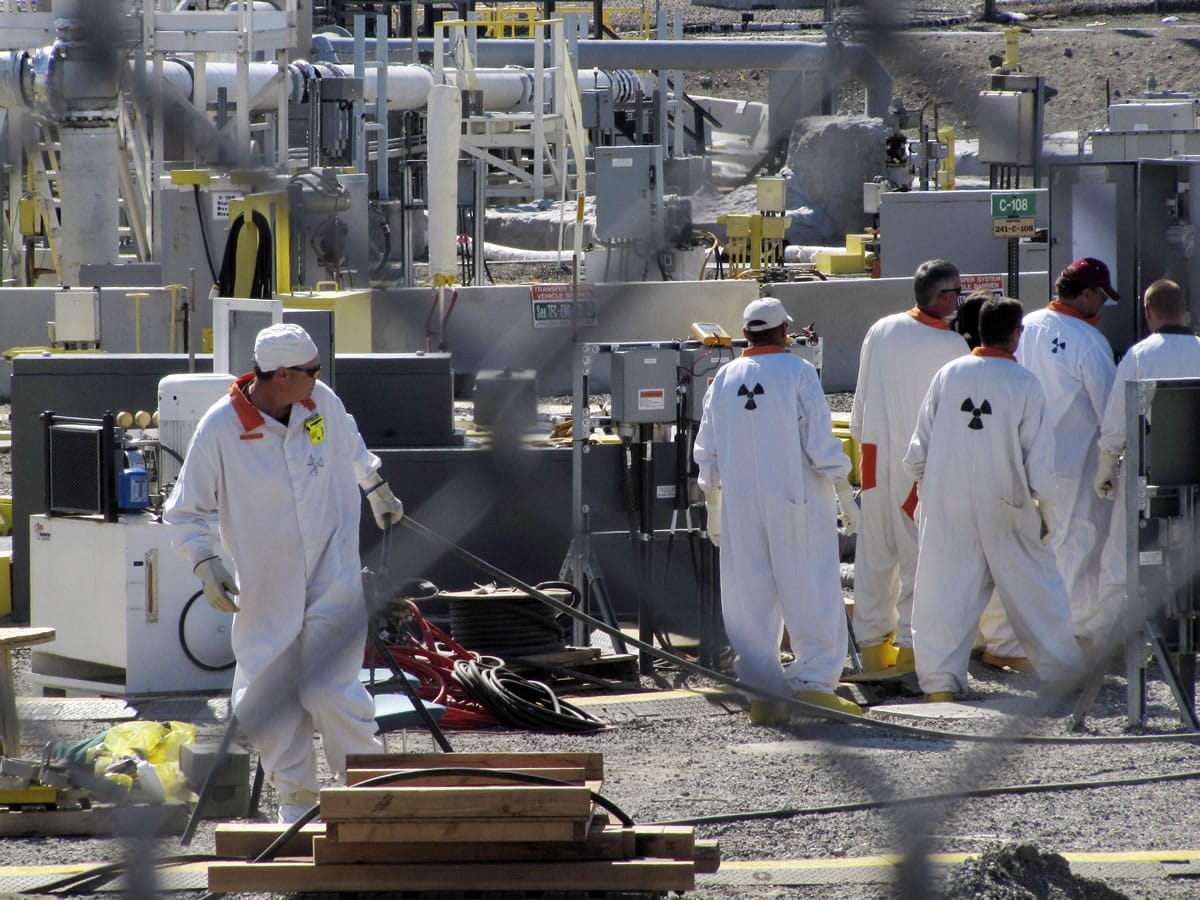YAKIMA — The new chairman of a key Senate committee asked for a federal investigation Tuesday into leaking underground waste tanks at the nation’s most contaminated nuclear site.
State and federal officials announced last week that six tanks at south-central Washington’s Hanford nuclear reservation are leaking. The tanks hold a toxic and radioactive stew of waste left from decades of plutonium production for U.S. nuclear weapons.
The nuclear site borders the Columbia River, the Pacific Northwest’s largest river that flows between Washington and Oregon, home state to Democratic Sen. Ron Wyden, the new chairman of the Senate Energy and Natural Resources Committee.
Wyden toured the Hanford site Feb. 19.
Wyden asked the Government Accountability Office by letter Tuesday to investigate when the Energy Department knew about the leaks and whether the agency and its cleanup contractors reported them appropriately. The letter also seeks a review of tank monitoring programs, including recommendations for changes.
“These new leak announcements raise a lot of questions about the monitoring and management of the Hanford tank farms,” Wyden said in a statement. “After visiting Hanford for myself last week, I’m now asking GAO to get to the bottom of how and when DOE found out about these leaks, and what can be done to reduce the risk of radioactive waste contaminating the environment.”
The federal government created Hanford in the 1940s as part of the top-secret Manhattan Project to build the atomic bomb. Today, it is the nation’s most contaminated nuclear site, with cleanup expected to last decades and cost billions of dollars.
Central to that cleanup: the removal of millions of gallons of highly radioactive waste from 177 aging, underground tanks, many of which are known to have leaked in the past. Workers have since removed all liquids that could be pumped out from the tanks and reported the tanks were stabilized in 2005.
State and federal officials have stressed that the latest leaks pose no immediate threat to public health or the environment, because the tanks sit 5 miles from the Columbia River and the contaminants inside the tanks move very slowly. But the news has renewed discussion over delays for emptying the tanks, which were installed decades ago and are long past their 20-year life span.



